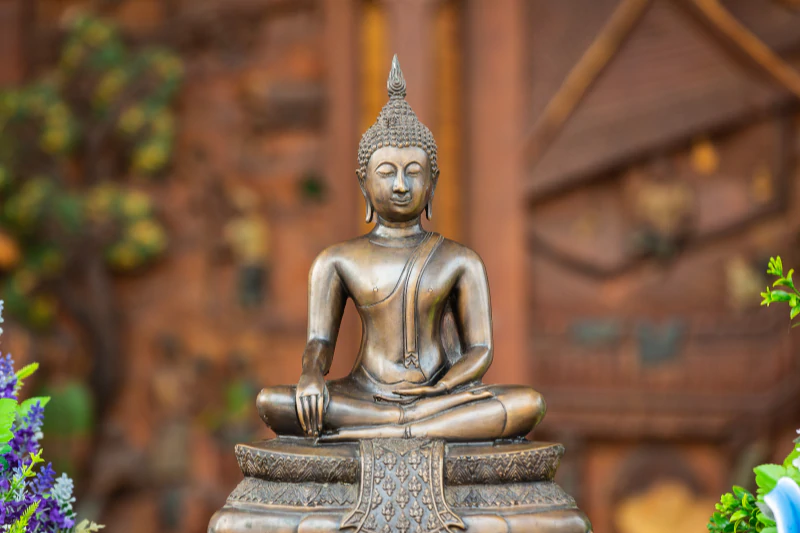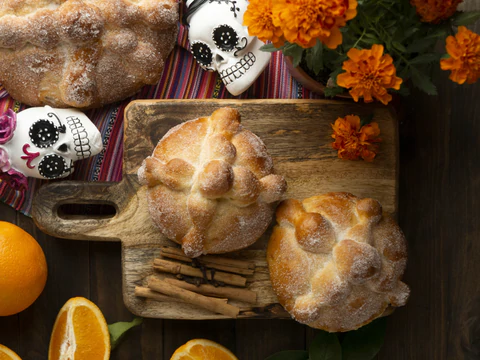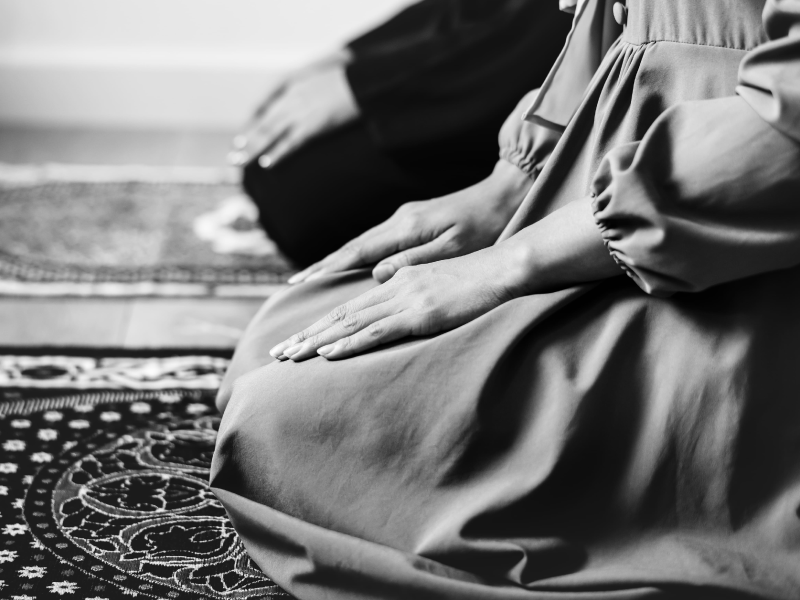The way people perceive death, and everything related to it, in most cases has to do with their culture and belief system. Religion plays an important role in peoples’ perception of death, because it influences the definition of “death” and the existence and significance of an afterlife or reincarnation.

How death is perceived from the religious point of view:
- Judaism, Christianity, Catholicism.
Death is seen as something negative in the social and cultural sense. In other words, people are negatively impacted by the news of the death of a loved one. They mourn, they feel emotional pain, in some cases they have a hard time coping with it, and some even fear death. In some cultures, mourners wear black during the grieving process. The mourning process can be a time of tremendous emotional pain but also a time of hope as mourners pray for their loved ones to rest in peace and reach eternal life with their God in heaven.
Although this ritual has changed over the years, some very devout believers avoid cremating the bodies of their loved ones. They prefer to bury them, so that at the end of times the soul may return to the body, and in that way they may see their loved ones again.
In Judaism the body is washed for its purification before burial. The cleansing must be done by a man to a man’s body and by a woman to a woman’s body. Finally, the body is covered with a white shroud representing purity. Cremation is forbidden and the burial must be in the ground.
For Catholics and Christians, the farewell ritual is followed by a Eucharist and floral decoration, where they express gratitude for the life of the deceased. Cremation is permitted and there are no clothing specifications for the deceased. Normally, remembrance masses are held on the anniversary, since it is important for the family to commemorate their loved one.

Among Catholics, especially in Mexico, on the 1st and 2nd of November they celebrate the Day of the Dead. It is a day dedicated to welcoming their dead relatives and spending time with them. Mexicans make altars and prepare their departed loved ones’ favorite foods. They also add special items to the altar that were significant to the deceased. The main purpose is to celebrate their lives and honor their memory in a positive and happy way.
- Hinduism
In Hinduism death has a more liberating concept and represents a transition state. The believer does not fear death, since they believe the soul of the dead will find another body in order to come back to Earth. In other words, they believe in reincarnation.
Death for them is not a punishment, but the end of a learning cycle. The new life will be better or worse depending on their behavior and the lessons they failed to learn in the past life. When the soul has accomplished its learnings, it will not return to this world but will become part of the celestial world. On the other hand, if his or her life on Earth has been marred with evil, he or she will go to the world where evil souls belong, a place commonly known as hell.
The Hindu rituals are more like a commemoration of the person who passed away. After they are gone they light a lamp at the head of the deceased to guide the soul while the loved ones gather to pray.
They do not touch the corpse, and the body is quickly given to the funeral home to be cleansed, disinfected, and dressed in white. They believe the cremation has to be done as soon as possible, so the soul can be free as fast as possible from the body to continue its journey.

- Islam
A combination of beliefs and rituals mentioned previously can be found in Islam. Just as in Judaism, Christianity and Catholicism, death is seen as something negative, although they believe in reincarnation as a new cycle of life, similar to Hinduism.
In their farewell ritual they cover the body with a cotton cloth, and they bury the body on its right side facing Mecca, their sacred place. Cremation is forbidden.
Family and friends pray and give eulogies so that the deceased may receive the mercy of the angel Gabriel who performs an interrogation about his or her life and beliefs. There will be a second interrogation, known as “the grave interrogation”, which begins right after burial, and should be done as soon as possible. This is the moment the dead faces a rendering of accounts to the angels Munkir and Nakir, while the devil tempts them. If they overcome this temptation, they will go on to a better life.
Only the men attend the actual burial. The women and children depart from the cemetery. The families receive condolences and begin to pray their prayers three days after.
- Buddhism
In Buddhism death has a neutral significance, which means it is neither considered positive nor negative. It is seen as the end of this life and the beginning of a new cycle of life, in which the soul continues its learning process. To them each soul will have many reincarnations until it reaches spiritual maturity that allows it to reach Nirvana and know the truth. This belief makes death a part of the process of the cycle of life, of which one should not fear. Indeed, grief, mourning and sadness are not well seen in this religion.
Unlike most religions, in Buddhism the desired death is one that is announced in advance, in order to help family and friends prepare for the departure. When a person dies or is about to die, the Book of the Dead, called “Bar-do’i-thos-grol”, is read to him for 49 days to teach that soul to transition between this life that ends and the one to come. After 49 days, a ceremony is held in honor of the deceased as a “final farewell.” Funeral ceremonies can be held on the anniversary for the next seven years, and a special one every seven years for 49 years.
As farewell rites, they use the following that correspond to the Four Elements of nature: incineration that represents fire, burial that represents earth, a type of interment that represents water, and carrion birds that represent air and clean up decomposition.
As for the funeral, they pray to Buddha. They cover the face with a shroud and do not touch the body to allow the release of the soul, after 3 days they go to the wake and the chosen farewell rites (of those mentioned above) are administered. It is common to gather with close friends and family to banish sorrow and on certain occasions, monks are present with their songs.
- African religions
In some African cultures, death is one more aspect of life, as it has no negative connotation at all. It is simply the end of the material world to ascend to the spiritual world. On many occasions, it is believed that the loved one will be reunited with his ancestors, and will help protect the family.
For some of these cultures, it is very important to represent or symbolize the presence of the deceased, for they consider them to still be part of the family. To prolong his or her existence in the world, relatives gather to drink, eat and sing praises to the person who is no longer with them. On many occasions, they dress in their clothes and imitate the manner of speaking of the deceased. They also dress the body in their best clothes and seat them in their favorite place before burial.
It is a custom to continue relating to their dead in a physical way. Therefore, they visit their graves, dance with them, change their clothing, among other practices, in order to strengthen the bond with their loved one.
How death is perceived from a cultural point of view:
Another way to see the perception of death is through culture. We could divide culture into two large groups, the Eastern and the Western. Although there are countless cultures around the world, these two present marked differences in the way life and death are seen.
Western culture is guided by attachment, by the fear of losing. People don’t talk about death. It is considered almost taboo. When a loved one dies, this way of seeing death makes the grieving process more painful, long, and it can be more difficult to overcome the loss. In the western world, the predominant religions are Judaism, Christianity, and Catholicism and therefore their beliefs predominate.
In Eastern culture their exposure to death is dealt with based upon reason through multiple rites that are part of everyday life. Children are taught that death is part of life, and that it is natural and one more step to transcend. Hinduism, Islam and Buddhism predominate in this culture.
As we have discussed, all cultures and religions have a different perception of death and life after death, but there are some similarites among them. One of these similarities is the belief that one must be good in this life. Good and kind actions will allow your soul to go to heaven to eternal life or to reincarnate into a better life, depending on the belief.
Another shared custom is the importance of performing farewell rituals and/or transformation rituals, which help our deceased loved ones transcend to the world after death, and helps their relatives learn to live without their departed loved ones.
